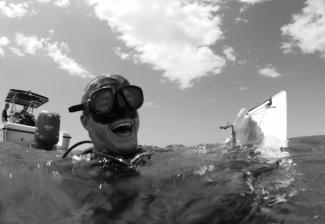Event
Kāneʻohe Bay as a model system for exploring climate resilience on coral reefs
Dr. Crawford Drury, University of Hawaii

Abstract: Anthropogenic pressure has substantially changed global marine ecosystems in recent decades through a combination of warming, acidification, eutrophication and other stressors. These effects are pronounced on tropical reefs because corals, the physical and energetic foundation of the ecosystem, are particularly sensitive to environmental perturbation. Among the threats to coral reefs, rising sea temperatures that cause coral bleaching and mortality are the most certain to persist and intensify as the earth’s oceans are committed to at least 1.5°C of warming even if emissions ceased today. Corals can adjust to environmental change through adaptation, acclimatization and dynamic symbioses, although each process has tradeoffs in duration, speed and magnitude of change and various ecological, physiological and biochemical consequences. This presentation details the interactions and outcomes of each of these environmental stress response mechanisms in a well-studied model system based in Kāneʻohe Bay, Oʻahu, Hawaiʻi.
